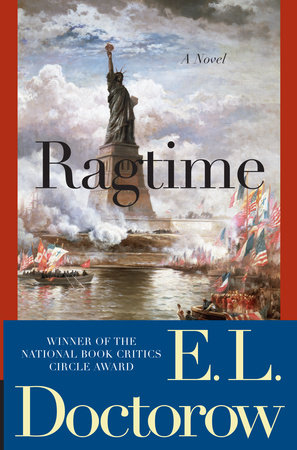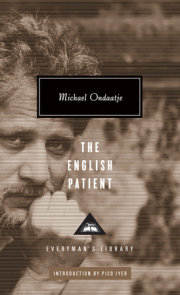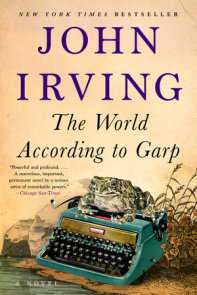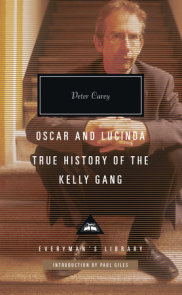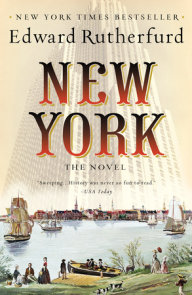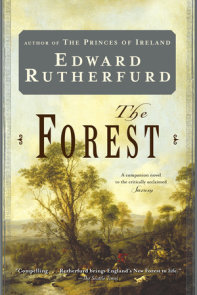TEACHING GUIDE
NOTE TO TEACHERS
Teachers: If you’d like a printable version of this guide, download the PDF attachment at the bottom of this page.
The traditions of literature and music have long been intertwined. This is apparent in the structure and rhythm of texts from Homer to Hemingway, and of course, in more literal explorations of the cultural impact of music, as in the works of F. Scott Fitzgerald and the writers of the Beat Generation. But while Fitzgerald and the Beats were engaged in a dialogue about the music of their own time, in this novel E. L. Doctorow has chosen to tether his ship to what is considered by many to be the first truly American genre of music–ragtime–a particularly resilient musical form which achieved popular success in the early 1900’s and saw revivals in the 40’s, 50’s, 70’s and 90’s. Despite the title of the novel and the employment of a dynamic central character who is a ragtime piano player, Doctorow’s novel is not about ragtime music. Rather, it is about a critical time in our nation’s history (one that should be, for readers, quite reminiscent of our own time) and significant social and cultural issues–personal issues, Doctorow emphasizes–which were reflected in ragtime music years ago and which continue to be reflected in the musical forms that succeed it, as well as in literature, academic discussion, and perhaps most importantly, in domestic dialogue.
Most extraordinarily, Doctorow has not only referenced ragtime music, he has gone so far as to channel it. The novel has, in fact, become a rag. It is fast–but not too fast, as Scott Joplin warns–loaded with history: powerful, entertaining, confrontational, revealing, contemporary. While this guide helps to break the novel down, unveiling the architecture of the story, illuminating themes, and providing prompts for further discussion, ultimately all of the text in this guide is meant to emphasize this last, most extraordinary quality–to remind readers why classic literature is important and to illuminate the ways in which we still relate to it today. Music, and more particularly its role in social reflection and reform, has always been an attractive draw for youth, and with your help, students should easily draw connections between the world of Ragtime and the world in which they are currently, powerfully engaged.
ABOUT THIS BOOK
In the mid-1970’s, as the Vietnam War was coming to a close, E. L. Doctorow was putting the final touches on his fourth novel, Ragtime, which would later be identified within the greater context of his career as his “breakthrough book.” Like those works of Doctorow’s that came before it, Ragtime stretches the boundaries of genre, weaving historical references into a fictional framework. The result is a carefully constructed allegory that not only exposes those less-spoken-of facets of American history and culture from the early 1900’s, but cleverly reveals a critical dialogue about contemporary times and long-standing issues such as freedom, identity, and justice.
Readers in 1975 would have had no trouble relating to the story of three families–a middle/upper class family from New Rochelle, a family of Jewish immigrants, and an African-American couple with a newborn baby–struggling to adapt and to survive in a rapidly changing society, booming with technological innovation and industrialization, faced with civil rights struggles, injustice, and social unrest. When readers encountered characters such as Emma Goldman, Mother’s Younger Brother, and Coalhouse Walker’s followers, it would have been nearly impossible not to see the burgeoning social forces of the day such as feminism, radicalism, and other components of the struggle for reform that were prevalent in the 1960’s and 1970’s. It is no wonder then that the book was so well-received, winning the Arts and Letters Award and the National Book Critics Circle Award for fiction, thus securing its place as an American classic.
The story begins with the impromptu meeting of the great magician Harry Houdini and the family from New Rochelle. In the depiction of this one minor character–a great escape artist, who also happens to be a Jewish boy struggling with emotional bondage over the death of his mother–we see that Doctorow’s greatest trick is not in the re-telling of important historical events, but in the revelation of personal histories and individual struggles that might normally be absent in historical narratives. While other authors might fill their pages with objects transformed into symbols, Doctorow has chosen to emphasize the human condition. Indeed, Ragtime’s most significant literary device is its treatment of human characters, functioning allegorically, who (while considered outsiders by social standards of the day) are unfailingly recognizable and relatable.
More than 30 years have passed since Ragtime was written, yet it still feels contemporary. American readers can still find themselves in Doctorow’s depiction of the complex drive for progress, the search for meaning, and the struggle for freedom and peace. Timeless questions are at the heart of Ragtime: Is progress really possible? Is peace possible? Are freedom and equality possible? If so, what must be sacrificed? What is the cost? While the outlook for the characters may not always be sunny, there is hope in Doctorow’s allegory. His characters are undeniably at the heart of the social landscape they inhabit. They are able to effect change, sometimes of revolutionary proportions. So in times that might be cloudy with political doubt or social unrest, readers may at least find a reminder of the power and resilience of the individual.
ABOUT THIS AUTHOR
Edgar Lawrence Doctorow was born on January 6, 1931 in New York, New York, and was raised in the Bronx, where he attended the Bronx High School of Science. He completed his undergraduate education at Kenyon College and continued his studies at the graduate level at Columbia University before being assigned to Germany as a drafted member of the U.S. Army. Doctorow’s literary career began when he served as a reader for Columbia Pictures. From 1959 to 1964 he was a senior editor for New American Library. He spent the following years as Editor-in-Chief of Dial Press. Since that time, he has been associated with many colleges and universities, including New York University, where (as of 2007) he continues to serve as the Lewis and Loretta Glucksman Professor of American Letters. Widely recognized for his novels that blend historical fact with fiction, Doctorow has been honored with numerous awards, including The National Book Award, The PEN-Faulkner Award, The National Book Critics Circle Award for Fiction, The Arts and Letters Award, and The National Humanities Medal. He has also been a finalist for the Pulitzer Prize. His novels stretch the limits of the genre: exhibiting social awareness; offering contemporary criticism through the lens of the past; and creating dialogue about personal histories, interpretation, and the nature of historical truth.
TEACHING IDEAS
In 1971, E. L. Doctorow published The Book of Daniel, a fictional depiction of the story of Ethel and Julius Rosenberg. While it was critically acclaimed, the complexity of the book prevented it from becoming a popular success. When the author began his next novel, it was with the intention of creating a novel that would be accessible to a broad, general readership. With Ragtime, Doctorow achieved this goal. The novel was appealing to general audiences, yet it was also a treasure trove for those looking to delve a bit deeper beneath the surface. The novel can be taught profitably within a wide range of disciplines, including literature, history, political science, music, psychology, philosophy, and cultural studies. Themes such as adaptation to change, the search for meaning, the impact of technology, the nature of historical truth, and the complexity of identity can be discussed under these headings.
English teachers might prefer to begin with a traditional approach, breaking the novel down into digestible components such as characters, structure, tone, imagery and symbolism, narrator and voice, plot, setting, cultural context, and themes. Those interested in an examination of the novel from a historical or cultural perspective might review the historical figures and events represented in the book, comparing and contrasting Doctorow’s vision with traditional representations in history texts. Consider how the book functions as an impetus for social criticism. How does it compare or differ from the myriad texts which prompted discussion of society in the past?
However teachers choose to conduct their studies, it is important for readers to make a connection between the time period represented, the time period in which the book was written, and our time. Why is the book still significant? How can we relate to the struggles of the characters in Ragtime?
DISCUSSION AND WRITING
1)When the story opens, the narrator describes life in the early 1900s, noting that “There were no negroes. There were no immigrants.” Is this description accurate? What might this statement propose about the accuracy of historical accounts?
2)Why might the author have chosen to name the characters as he did? Why do some of the characters have general names such as Mother’s Younger Brother while others have proper names like Coalhouse Walker, Jr.? Does this affect the way we relate to them?
3)Describe the narrator of the story. Can we be certain of who it is, or does the point of view shift throughout the story? How does Doctorow’s method of narration relate to historical texts?
4)Why did the author choose the title Ragtime for this novel? What is ragtime music? What are its origins and how does it relate to other genres of music? What does it reveal about the society in which it was created? What literary devices does the author use to reference or re-interpret ragtime?
5)Why might the author have chosen not to use quotation marks? Does this affect the rhythm of the story?
6)Describe the setting of Ragtime. When and where does the story take place? Why might an author have chosen to write about this time period and these places and events?
7)When was Ragtime written? What was happening at the time? How might readers then have related to the story? How do we relate to it today? Is it simply a historical narrative or does it reveal things about contemporary society?
8)Why do you think that Mother’s Younger Brother chose to help Coalhouse Walker, Jr.?
9)Doctorow chooses to incorporate historical figures in a fictional context. Who does he include? Why might he have chosen to include these people? Does his portrayal of them match historical accounts?
10)The story takes place during a time of technological progress and industrialization. What are some of the innovations represented in the book? How does their presence affect the characters? Is the impact good or bad? Explain.
11)The quest for freedom and peace is a key theme of Ragtime. How does the author use Harry Houdini to illuminate the complexity of this quest?
12)While the characters represent different classes and races, they share much in common. Discuss some of these commonalities. How are the characters different?
13)What imagery does the author use in the first chapter to set the scene? What does it tell us about life in the early 1900s? What might the purpose be in revealing the murder of the architect Stanford White? Does it change our initial impression of American life during this time?
14)When Evelyn Nesbit meets The Little Girl in the Pinafore, she is tied with rope to her father’s wrist so she won’t be stolen. How does the author make connections between Evelyn, The Little Girl, and Mameh? Why is Evelyn drawn to Tateh and The Little Girl?
15)When Father returns to New Rochelle, the mirror “gave back the gaunt, bearded face of a derelict, a man who lacked a home.” What does this mean? What has changed since Father left home? How does he adapt to these changes?
16)Why might J.P. Morgan be so fascinated with Egyptology? Do his fortune and his collection of valuable objects bring him peace? Why do you think he invites Henry Ford to meet with him?
17)The notion of value is prominent in the book. What do each of the characters value? What consequences does this have for them?
18)Does Coalhouse Walker, Jr. obtain justice? What does he sacrifice in the process? How do his actions affect those around him? How does this scenario relate to the justice system and civil rights struggles in today’s society?
19)Why does Tateh reinvent himself as a baron? What does it mean for his identity? How does the style and imagery of the novel relate to the advent of cinema? How does this invention change our perception of history?
20)Many of the characters struggle for what they believe is right. Are they successful? How are these struggles tied in to the notion of identity or societal definitions of identity?
21)The author uses his characters allegorically. What groups are represented? Do you feel the portrayals are accurate? Why or why not?
22)The author presents many representations of family and relationships. Describe some. Which are most successful? Why do you think this is?
23)Why do you think that Mother and Tateh end up together? What draws them together? How would this relationship have been viewed in the early 1900s? How would it be viewed today?
24)Why do you think that the author chose the quotation by Scott Joplin as the novel’s epigraph? What does it signify?
SUGGESTED ACTIVITIES
1)Listen to ragtime music with your class. Discuss how this style of music reflects the society in which it was created and the issues of the day. Then allow your students to choose a few contemporary songs. Discuss how they relate to these songs and how they reflect our society and our experiences. Examine style, rhythm and tempo, instrumentation, lyrics, etc. Examine some other examples of music which were more straightforward tools for social commentary or criticism such as folk music and protest songs of the 60s etc.
2)Choose music from three different genres. Have students listen to each piece and compose short pieces of fiction or poetry which relate to or interpret each piece of music. Discuss their interpretations and the various methods that each student used to accomplish this. How do the texts relate to the music? What do they share in common? Afterwards, you might look at some texts and show how their authors related to music through form or structure, rhythm, choice of punctuation, historical references, etc.
3)Have students choose a historical character to incorporate into their own work of fiction. Discuss why they chose this person. What did they change about them? Why? What attributes remained true to life or historical accounts?
VOCABULARY
civil rights
feminism
radicalism
revisionism
immigration
industrialization
assembly line
socialism
ragtime
anarchism
Mexican Revolution
invention of the moving picture
Egyptology
Emma Goldman
J. P. Morgan
Henry Ford and the Model T
Harry Houdini
Evelyn Nesbit
Teddy Roosevelt
Peary’s expeditions
Archduke Franz Ferdinand
Lusitania
Henry Frick
Jacob Riis
Stanford White
Harry K. Thaw
Theodore Dreiser
Sigmund Freud
Carl Jung
William Howard Taft
Emiliano Zapata
zapatista
Scott Joplin
Booker T. Washington
OTHER TITLES OF INTEREST
U. S. A. Trilogy, John Dos Passos.
Remembrance of Things Past, Marcel Proust.
Crime and Punishment, Fyodor Dostoevsky.
Leaves of Grass, Walt Whitman.
Advertisements for Myself, Norman Mailer.
In Our Time, Ernest Hemingway.
The Great Gatsby, F. Scott Fitzgerald.
Hard Times, Charles Dickens.
Michael Kohlhaas, Heinrich von Kleist.
Winesburg, Ohio, Sherwood Anderson.
Jazz, Toni Morrison.
Age of Innocence, Edith Wharton.
The Portrait of a Lady, Henry James.
Three Lives, Gertrude Stein.
Goodbye, Columbus, Philip Roth.
The Wasteland, T. S. Eliot.
Invisible Man, Ralph Ellison.
East of Eden, John Steinbeck.
Collected Poems of Langston Hughes, Langston Hughes.
Howl, Allen Ginsberg.
The Adventures of Augie March, Saul Bellow.
Collected Poems, e. e. cummings.
The Jungle, Upton Sinclair.
ADAPTATIONS
Ragtime, 1981 movie.
Ragtime, 1998 musical.
ABOUT THIS GUIDE
This guide was produced by Jennifer Banach Palladino, a writer from Connecticut. Jennifer was the main contributor to Bloom’s Guides: The Glass Menagerie, edited by Harold Bloom for Facts on File, Inc. She also recently completed a guide to Hermann Hesse’s Siddhartha for DemiDec, Inc., a producer of guides and study materials for the U.S. Academic Decathlon and the World Scholar’s Cup.
×
Become a Member
Just for joining you’ll get personalized recommendations on your dashboard daily and features only for members.
Find Out More Join Now Sign In








